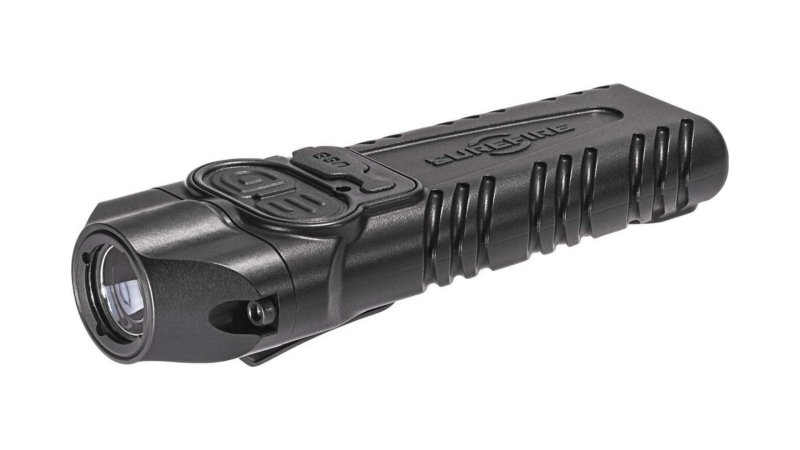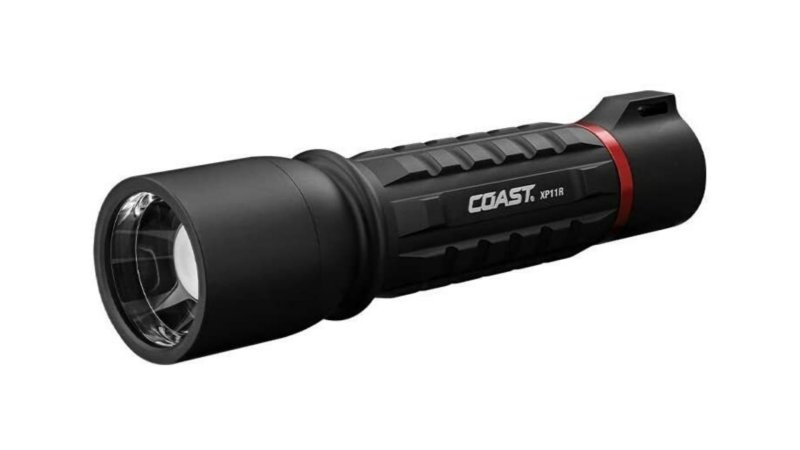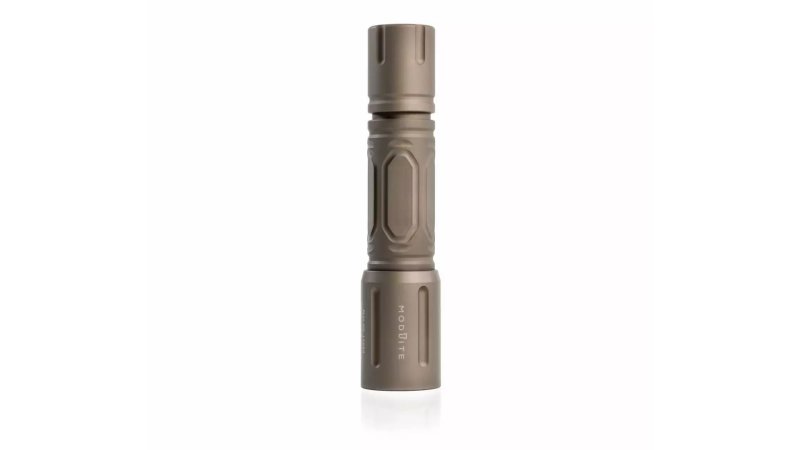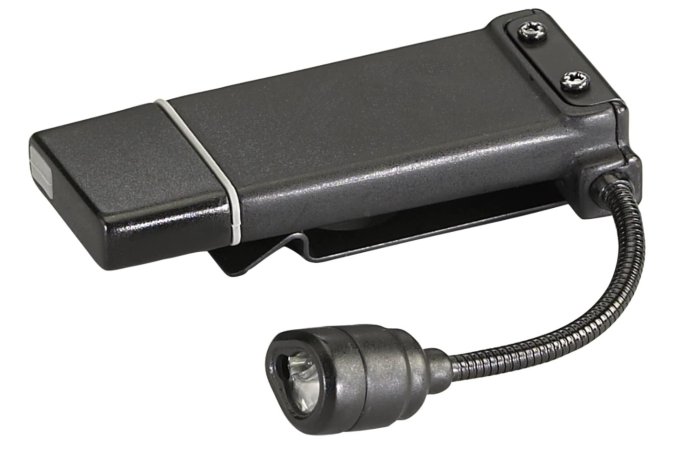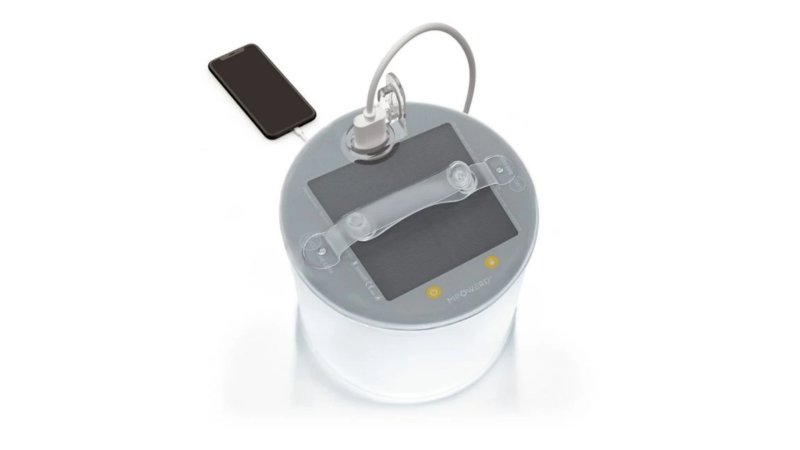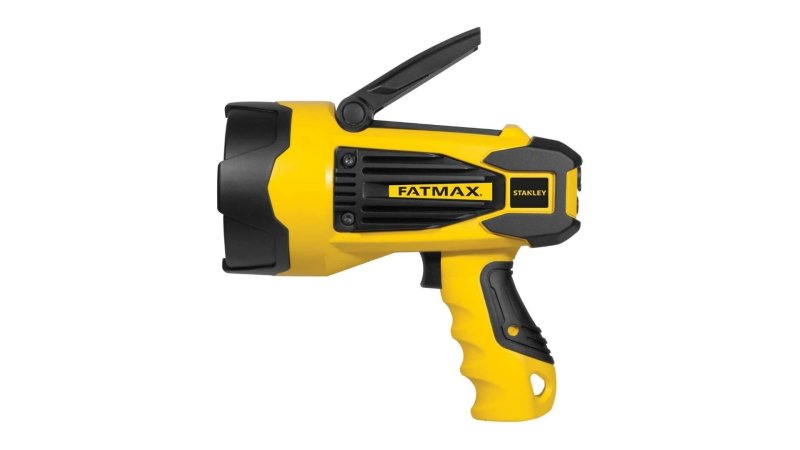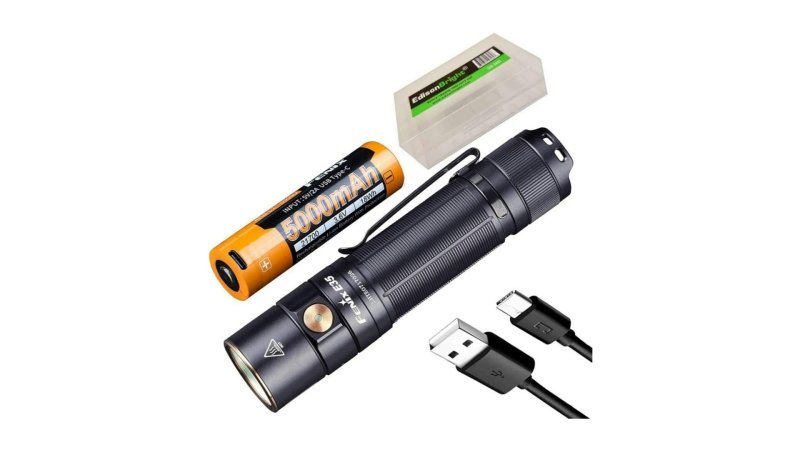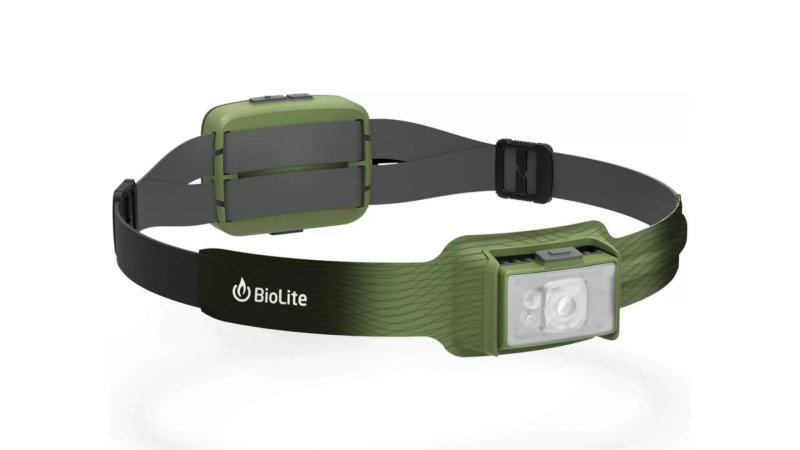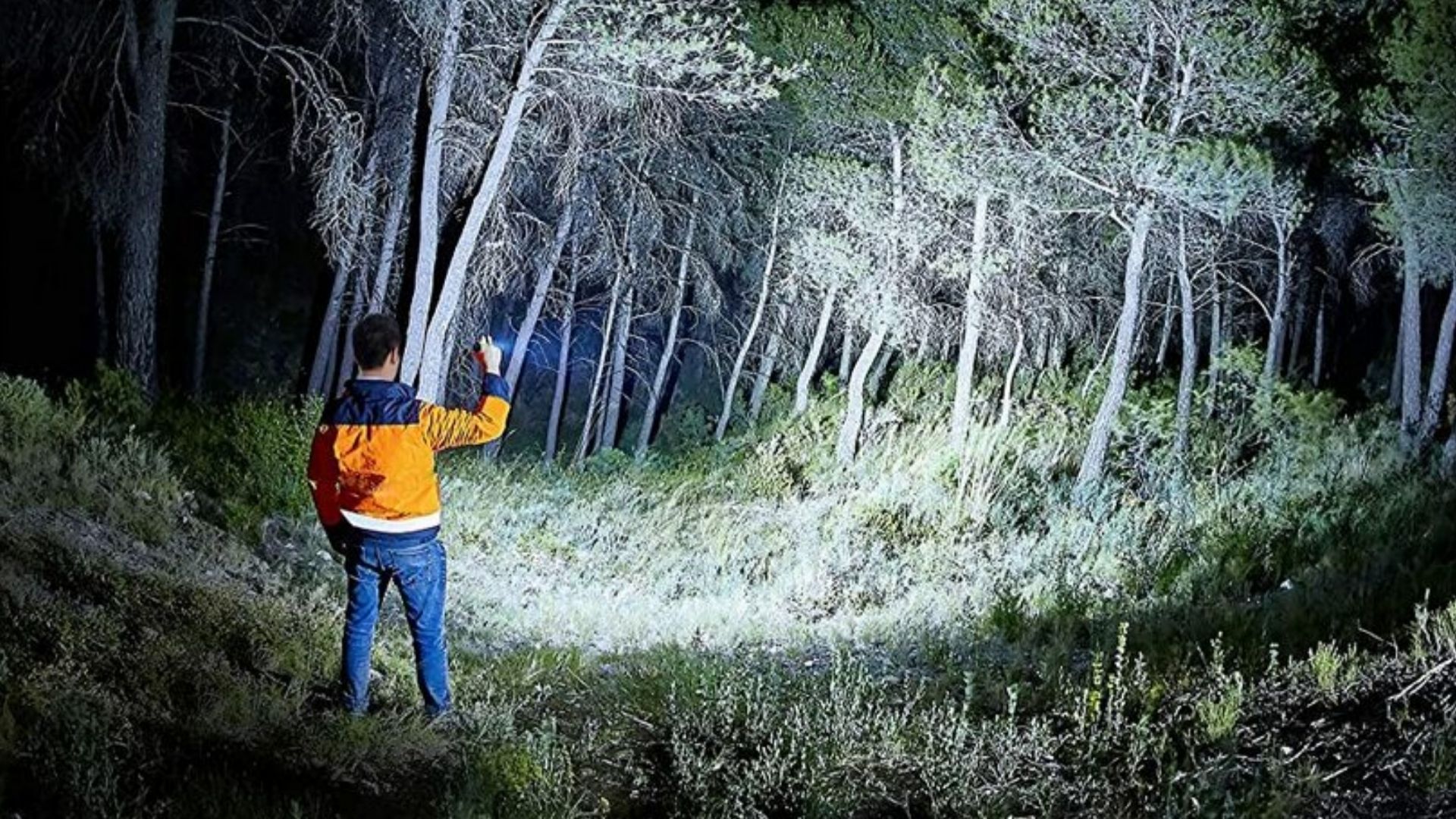

We may earn revenue from the products available on this page and participate in affiliate programs.
As you shop for a rechargeable flashlight, you might be eyeing your emergency supplies, tactical gear, and survival equipment, and wondering what’s about to become unobtainable. I’m no fortune teller, but disposable batteries seem like something that would vanish in a heartbeat if things took a turn for the worse. The less reliant you are on products that are designed to fail, the better. Don’t worry, your head is in the right place.
Rechargeable flashlights are a huge upgrade. Not only do they save money, but you can also charge them indefinitely with a solar charger and a power bank. One of the easiest ways to upgrade your gear is by switching to a rechargeable flashlight.
It doesn’t matter if you want an EDC light, something for work, or a lantern for your campsite—we have you covered. We searched the internet to find the best lights from the best brands so you can spend less time shopping and more time getting after it.
- Best Overall: SureFire Stiletto Pro
- Best Value: Coast XP11R
- Editor’s Choice: Modlite PLHv2-18650
- Best Hands-Free Tactical Light: Streamlight ClipMate
- Best Solar-Powered: Mpowerd Luci Base
- Best Spotlight: Stanley Fatmax SL10LEDS
- Best EDC: Fenix E35 V3.0
- Best Headlamp: BioLite HeadLamp 750
Best Overall
SureFire Stiletto Pro
Pros
- Three output levels at your fingertips
- One-touch activation for the highest setting
- Flood pattern improves situational awareness
- LED battery level indicator
Cons
- Spotlight pattern not available
- Battery life limited to 23.5 hours
- Not the most ergonomic shape
Product Specs
- Output: 1,000 lumens
- Settings: Low, medium, high
- Length: 4.5 inches
- Weight: 4 ounces
- Battery life: 23.5 hours (on low setting)
Best Value
Coast XP11R
Pros
- Quickly switch between spot and flood patterns
- Temporarily access 2,100 lumens in “turbo” mode
- We always appreciate USB-C over micro USB
- Aluminum is a pleasant surprise at this price
Cons
- Slide adjustment is less intuitive than twisting
- Build quality is good but not refined
- Seriously heavy compared to the competition
Product Specs
- Output: 2,100 lumens
- Settings: Low, medium, high, turbo
- Length: 6.3 inches
- Weight: 13 ounces
- Battery life: 37 hours (on low setting)
Editor’s Choice
Modlite PLHv2-18650
Pros
- Durability and build quality are unparallelled
- Tough enough to use as a SCAR weapon light
- Anodizing available in black or flat dark earth
- Modular design allows customization
Cons
- Only one power setting
- Seriously expensive compared to other flashlights
- More information from the Modlite website would be nice
Product Specs
- Output: 1,350 lumens
- Settings: On/off only
- Length: 5.3 inches
- Weight: 5.9 ounces
- Battery life: Not specified
Best Hands-Free Tactical Light
Streamlight ClipMate
Pros
- Easily clips into MOLLE or onto a hat brim
- Articulating light can be aimed where you need it
- Earns an IPX4 water resistance rating
- Battery lasts up to 65 hours (red light, low setting)
Cons
- Limited power output limits this light to close-quarters work
- Beam pattern is not adjustable
- Articulating stalk may become a wear item
Product Specs
- Output: 70 lumens
- Settings: White low, white high, red low, red high
- Length: 3.2 inches
- Weight: 1.9 ounces
- Battery life: 65 hours (on red light low setting)
Best Solar-Powered Flashlight
Mpowerd Luci Base
Pros
- Powered by the sun
- Charges in 28 hours and lasts 50 hours
- Waterproof and impact-resistant enough for camping
- Can be used to charge other devices
Cons
- Not a handheld flashlight
- Shines like a lantern rather than with a focused beam
- Strong bonfire and ukulele vibes
Product Specs
- Output: 360 lumens
- Settings: Low, medium, high
- Length: 6 inches
- Weight: 10.1 ounces
- Battery life: 50 hours (on low setting)
Best Rechargeable Spotlight
Stanley Fatmax SL10LEDS
Pros
- Cranks out 2,200 lumens on the high setting
- Lasts 7 hours on the low setting
- Built to be as durable as other Stanley tools
- Can charge other devices via USB
Cons
- Two pounds and almost a foot long
- Only two output settings
- Charging cord is short
Product Specs
- Output: 2,200 lumens
- Settings: Low, high
- Length: 11 inches
- Weight: 2 pounds
- Battery life: 7 hours (on low setting)
Best Rechargeable EDC Flashlight
Fenix E35 V3.0
Pros
- Surprisingly powerful for its size
- Uses a quick-charging USB-C
- Includes five brightness settings
- Waterproof to 1.5 meters for 30 minutes
Cons
- We’re skeptical about the 3,000 lumen rating
- A more competitive warranty would be appreciated
- Some users prefer an end-mounted power button
Product Specs
- Output: 3,000 lumens
- Settings: Eco, low, medium, high, turbo, strobe
- Length: 4.6 inches
- Weight: 2.4 ounces
- Battery life: 50 hours (on eco setting)
Best Rechargeable Headlamp
BioLite HeadLamp 750
Pros
- More features than other lights can come close to
- Low setting lasts 150 hours
- Can be used and charged simultaneously
- Awesome gear funds an awesome cause
Cons
- All those features are controlled by just a few buttons
- One of the pricier rechargeable headlamps
- Button design can be glitchy
Product Specs
- Output: 750 lumens
- Settings: Low, medium, high, burst
- Length: Not applicable
- Weight: 5.3 ounces
- Battery life: 150 hours (on low setting)
Why you should trust us
We’ve gone deep into researching the best rechargeable flashlights for our readers. Whether you want something tactical, something extra bright, or just want to get the lay of the land when it comes to the kinds of general-purpose flashlights available, we’ve done the homework so you don’t have to. We’ve used all kinds of lights ourselves, from weapon lights and EDC lights to camping lanterns and work lights made for the job site. Before including anything on our gear guides, we ask ourselves if we’d want to buy it with our own money. If the answer is no, it doesn’t make the cut.
Types of rechargeable flashlights
Flashlights come in many different forms, and that doesn’t change just because the power source became reusable. The difference between different types of rechargeable flashlights starts with the intended use. When we put this list together, we made a point to represent the most popular styles of flashlight and the background information to make informed decisions about them.
EDC
Most flashlights can probably fall into the everyday carry category. This is a pretty broad term, and modern flashlights pack so much power into a small size that most of the options on this list could reasonably be carried as part of your EDC.
To qualify as an EDC item, we think a flashlight needs to be portable, reliable, and easy to use. We’re not fans of throwing money away on cheap gear that’s likely to break, so anything that’s going to recommend our endorsement for EDC duty needs to be durable and high-performing. That means build quality, lumen output, and features all get put under the microscope.
Headlamps
There are certainly times when holding a flashlight in your hand isn’t ideal. Headlamps are a great way to get work done in the dark, whether you’re doing home repairs in the attic or pitching a tent after a long day of hiking. Rechargeable options eliminate the need to carry batteries around at work or on the trail, and they can even be charged up using a solar bank.
Generally speaking, the activities that call for a headlamp aren’t particularly gentle on gear. We prefer headlamps that can withstand drops, harsh temperatures, and at least some amount of water. If you want to really nerd out, check out our headlamp-specific gear guide.
Searchlights
Searchlights are the heavy-duty workhorse of this group. They house enough power to blast through the darkness with the kind of brightness you’d get from your car’s high beams. Considering the times you’d need to use one of these behemoths, we only considered options that are rugged enough to join into a search party during an emergency.
A byproduct of all the power is size. Searchlights are much larger and heavier than other flashlights and should be kept in your home or vehicle rather than a hiking pack or bug out bag. They’re not very practical for day-to-day use, but when you need one, you need it badly.
Key features of rechargeable flashlights
Light output
When you shop for flashlights, you’ll see them identified by the number of lumens they produce. A lumen is a unit of measurement used to measure light output. More specifically, manufacturers are referencing luminous flux (how much light the human eye actually detects given its wavelength) rather than radiant flux (the actual output of the light). This gets pretty scientific, but you can learn more from actual scientists.
Generally speaking, less than 100 lumens is useful for things like reading. Flashlights often produce as many as 1,000 lumens, making them great for outdoor activities that involve greater distances. Go much beyond that, you’re starting to enter the world of searchlights.
Beam settings
Different flashlights create light in different ways, including beam patterns. Floodlights scatter light in a broad spread to aid in situational awareness, but that comes at the cost of decreased overall brightness. Spotlights focus all their light in one area to achieve greater range.
Many flashlights can do both, either with multiple bulbs or an adjustable lens. Some have other features like strobes for tactical use or creating a distress signal. Unless you have a specific reason for carrying a certain type of light, it’s a good idea to carry something versatile. Luckily, we found a great selection of flashlights for whatever you’re up against.
Beam colors
The vast majority of flashlights use white light for the same reason we use white lights in our homes and cars: It produces the most natural colors. Still, there are times when other colors are useful. France favored yellow headlights for nighttime driving, and there’s a decent argument to be made for that decision.
Flashlights sometimes come with red, green, or blue lenses that are intended to preserve your night vision and maintain a low profile. Some actually use infrared light rather than visible light. This is invisible to the naked eye but works like a charm with night vision optics.
Benefits of rechargeable flashlights
Sustainability
Here’s a dirty little secret about green energy: Batteries are seriously nasty things in terms of environmental impact. There’s a reason the Environmental Protection Agency has strict rules about how to dispose of the little biohazards. Why not put an end to the endless consumption of disposable batteries and upgrade to a rechargeable one?
Pollution aside, rechargeable flashlights can be a tremendous asset off the grid. Rather than relying on a supply of heavy disposable batteries, you can top off your flashlight with a solar charger and USB cord anywhere there’s access to sunlight. If you’re prepping for any kind of extended trip away from civilization, rechargeable electronics should be a high priority.
Cost savings
There’s a very real financial incentive to make your next flashlight purchase a rechargeable one. The cost of replacing all those dead batteries adds up over time. Even though they’re relatively cheap, they can’t come close to the fraction of a penny it costs to charge your flashlight from an outlet or a car’s cigarette lighter. Plug it into a solar bank, and it’s free.
Rechargeable flashlights are more expensive than their traditional counterparts, so it’s not all good news. That cost will be offset down the road though, and the more you use your flashlight the quicker your decision will pay itself off.
Pricing considerations of rechargeable batteries
Budget
There are several companies that build solid rechargeable flashlights. There are also a lot that use cheap components to build products that work for a short time but fall apart way too easily. Most of the time, you can tell the difference by the price tag because you get what you pay for. Shopping in the sub-$50 category takes a keen eye to land something good.
One exception that stands above the rest is our value pick, the Coast XP11R. Coast makes flashlights that punch above their weight and this one is a great way to get the features and build quality you want.
Mid-range
Generally speaking, the best rechargeable flashlights fall in the $50 to $200 range. Between the upper and lower extremes are examples that span the spectrum of the kind of gear we like. On one end are flashlights that stretch their components to their potential and deserve serious consideration. On the other are high-end lights that use aluminum instead of plastic and break the 1,000-lumen barrier.
Battery life tends to be very good at these prices, as does build quality. There’s also a nice selection of styles here. We found EDC flashlights, tactical lights, and headlamps that are worth a look.
Premium
The most expensive rechargeable flashlights use top-shelf materials and engineering to achieve levels of performance and durability that lesser flashlights can’t compete with. Options are somewhat limited due to the small number of manufacturers that cater to this price range. We included one option that costs around $300 and saw some priced in the thousands.
Lights in this category are generally designed for use in the military and law enforcement. Many are weapon lights that need to absorb the concussion of being mounted to a barrel and perform at maximum capacity when lives are on the line. When you consider that, they’re priced pretty fairly.
How we chose our top picks
We chose the best rechargeable flashlights for this list by focusing on products from top-tier manufacturers. That includes premium lights designed to survive combat and cost-saving options that provide more value than the price tag suggests. Not every flashlight needs to crank out more than 1,000 lumens or include multiple colored lenses, but everything on this list has some kind of selling proposition that earned our vote of confidence.
FAQs on rechargeable flashlights
You’ve got questions, Task & Purpose has answers.
Q. What is the highest lumen rechargeable flashlight?
A: We’re not sure what the record is, but Surefire makes a wicked rechargeable weapon light aptly named the Hellfighter that puts out 3,000 lumens and costs nearly $10,000.
Q. Are rechargeable flashlights any good?
A: Absolutely. There will always be variations from product to product, but the rechargeable flashlights on this list can hold their own against any traditional flashlight.
Q. How many lumens should a good flashlight have?
A: That depends on your activity. Reading a book or checking a map can be done with less than 50 lumens. Walking in the dark is better served by 750 to 1,000 lumens, and some tasks call for even more.
Q. How long can a rechargeable flashlight hold a charge?
A: Battery life can be tricky to calculate because it’s easily affected by other components and environmental factors. The flashlights you see here last several hours on a single charge, and some can go all night.
Our gear section
Scott Murdock is a Task & Purpose commerce writer and Marine Corps veteran. He’s selflessly committed himself to experiencing the best gear, gadgets, stories, and alcoholic beverages in the service of you, the reader.
